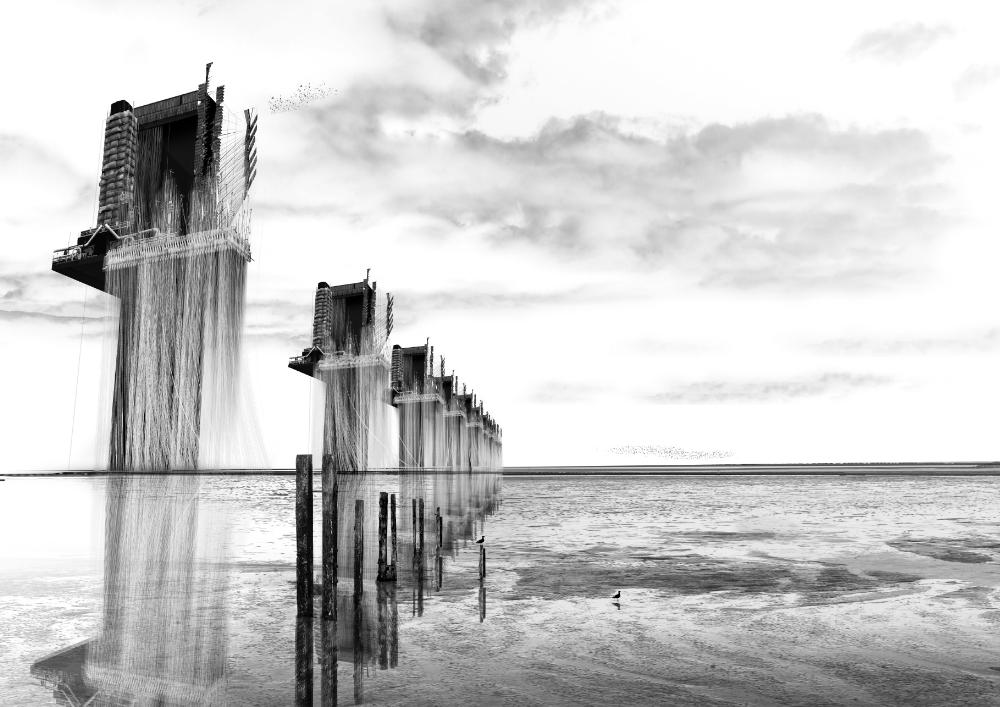You glide in through one of the most agreeable airports in the world--along impeccably detailed woodwork and long sailing spars, past highly civilised seafood bars and bookstores that carry the very latest issues of Frieze, Guitar, Stereophile or the Quarterly Review and down onto the platform for the city train.
Suddenly you're aware of a whispering sound ... shuffle a metre or so sideways and you come under its spell (or rather, under the 'sound-cone'), which gently intones poetry as you wait for the train. Two minutes of Norwegian and then two of English. Your progress continues at a similar level of sheer civilisation: the train is, of course, both sleek and calm, the dream of us all, surely?
The extremes of weather, the day or night needs of food or amusement are dealt with in similar manner. I beam with a certain proxy pride as I have been recommending Oslo for 38 years since that first ever Archigram 'gig' at the house of the artists: the Kunstnernes Hus. Typically, such a house sits alongside the park of the Royal Castle--a slightly scaled-down but less corny version of Buckingham Palace--where you can walk right up to the windows. It follows that the Crown Prince can be seen in the local supermarket.
Since gaining the bonanza gift of oil, to add to the handy abundance of timber and hydro-electrical power, the Norwegians have been highly circumspect. They haven't gone mad, but are salting away and investing the cash for future generations, intelligently feeding a percentage of it into social facilities, roads and tunnels. The old Nordic streets, with their scaled-down Germanic architecture (always a jot 'sweeter' than in Hamburg or Frankfurt), now echo to the sounds of students comparing the qualities of this coffee house to that and their parents comparing Sushi techniques that are surely more delightful than the old recipe for keeping a fish under a stone for 100 years.
Way back in the '80s, I taught at the architecture school here, and encountered an extraordinary bunch of students. They were the most responsive of any of the thousands, before or since. They pushed themselves graphically, followed every lead, collected every book and leaflet, drank, sang and giggled hard, their studio always open, littered with red wine bottles on the window cills and white wine in the several refrigerators. There were dogs, kids, visitors and every kind of chatter. The wonderful Sverre Fehn would come in and his crits always seemed to end up with his making of a drawing to make a point ('Now we could have tree') and a telling little squiggle would say it all. Elsewhere in the building, Christian Norberg-Schulz would intone his theories. Simultaneously, the school and the Architecture Society were at the peak of a classic programme of visiting lectures We Londoncentrics must remember that it was Oslo that first heard Sejima, Hasegawa, Diller or Domenig outside their homelands.
No wonder, then, that Norway began to surprise its architectural neighbours with an increasingly literate--and sometimes inventive--architecture. The generation of Jarmund/Vigsnaes, with their timber stealth bomber up in Spitzbergen, or Magne Magler Wiggen with his giant green frog (an inflatable) that landed for a year bang in the middle of the museum quarter, were the product of a strong local culture.
Of course it was with great delight that I returned for another sortie, twenty years later. Amused that the school is now housed in a much grander space--a former electricity headquarters made over by the same Jarmund/Vigsnaes, enjoying themselves with orange windows for the seminar rooms so that the long months of grey light could be cheered-up. Delighted, also, to see on its grass roof an Archigram icon: yes David, the 'Mowbot' is alive and well and mopping-up the grass above our heads. Approving of the big yellow patches and grungy balustrading.
So what was the tune being played by such an instrument? Surely one that would be civilised, informed, sophisticated? But sadly not. After 4pm, the place is like a morgue. You have to seek special permission from a jobsworth lady to put any drawings on the wall ... so you don't. Everywhere seems to need an electronic key. Nobody hangs around chatting. Wine is for wine bars. Criticism should be reserved for books on theory (very popular), verbal criticism is to be only on the gentlest, most politically correct (ie, flabbiest) level, otherwise the students squeak pain, or just melt away The visitors programme sags and features the more reassuring, more fashionably political rather than the creatively challenging foreigners. The teachers mutter into their beards that there is 'no effort, no production', but still leave at 4, since there's no one to talk to anyway. It is all very comfortable. The poetry soothes, the rooftop lawn is effortlessly mown--and the cute, tweaky, intelligent architecture of the 40-year-olds is being ignored by the new kids on the block.
Wiggen learned at the hand of Fehn and a certain Bernard Tschumi, and then made objects that could never have come from either of their hands, yet honoured the power and the quality of their architectural effort.
So I have seen a future, enviable in its advantages, yet despicable in its feebleness. Rescuable? Who knows.



